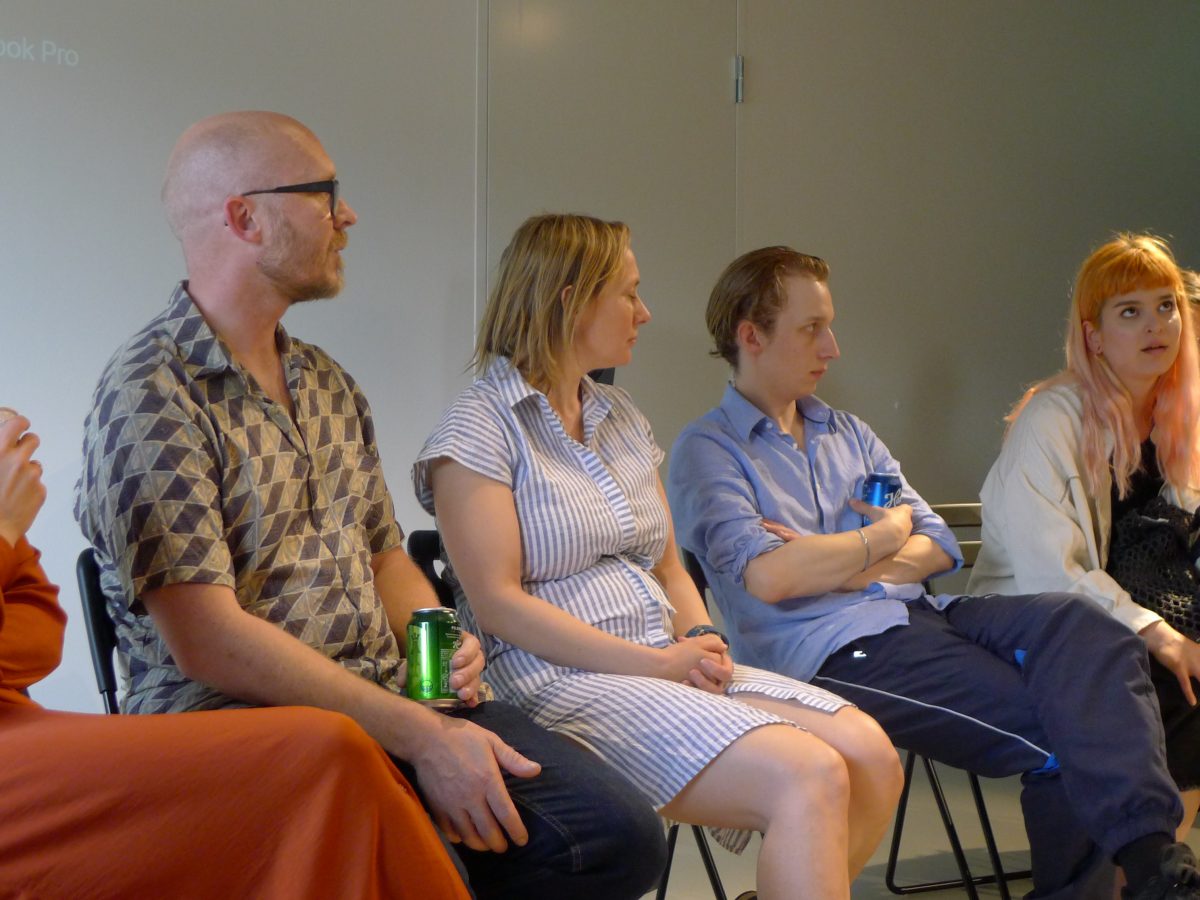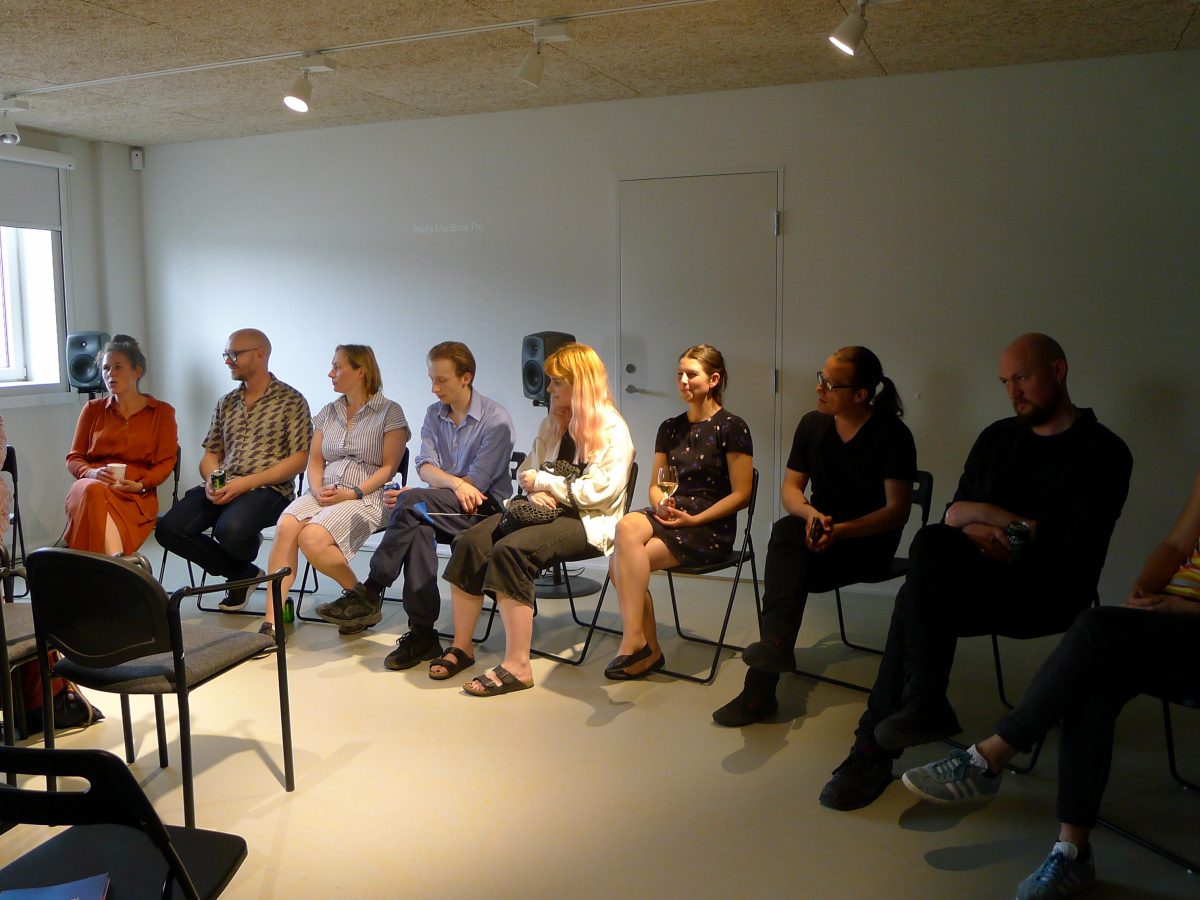Survival Kit for the Age of Technology – a Co-created Video Book
Published
During the week of June 10 – 16th, it is time for another Future DiverCities LAB at BEK! We will use last year’s seminar Survival Kit for the Age of Technology as our point of departure, and have invited a number of artists, creatives and experts to co-create a Survival Kit for Age of Technology – in the form of a video book. The result will be released in a video screening open for the public at BEK on Saturday June 15th.
Video screening June 15th from 18.00 – free and open for all!
Light refreshments will be served.
Please note the the screening will start 18.10
Welcome!
We wade around in terminology, technical gadgetry, new and old habits of communication, all of which have been spawned by technological developments. There have been so many new developments in such a short span of time, that we have not yet come to a conclusion about what the whole of it means in practice, theory or interaction between ourselves. We may all have felt – at work, in one’s private life, in all relations that we are a part of – that our understanding of technology is not enough. What it means to us and what it does to us is not easy to get an overview of, especially if we are up to our knees in it. Our time is scary, frustrating and can move in many directions. What should we know, what should we do and what ought we to master?
With this as a starting point we will make a video book together; a Survival Kit for the Age of Technology. The video book will be co-created by artists, creatives and experts suggested within Future DiverCities (FDC) for this LAB at BEK.
This LAB is a follow-up of last years seminar Survival Kit for The Age of Technology. The “mining” we did then resulted in experiences, artistic outcome and most important: three lectures that is advising us on what we need to have in our Survival Kit for The Age of Technology. The lectures exist as texts and as a live streamed and captured video that is accessible on BEK-Vimeo. Participants in this years LAB will create artistic and discursive context based on this material. The format is time based and will be created as video chapters. The video book will be made with the production facilities at BEK, and with the assistance of videographer Paul Johannessen and artist Anne Marthe Dyvi.
The artists invited to the LAB are both local and international, all with the experience and interest in technology, research and artistic practice. The lab will provide technology and tools, research material, project space and a program of talks and excursions. The Video Book will be co-produced by everyone participating, and participants have a shared ownership to the work and everyone involved can respectfully share and use it in the future.
Participants
Artists Samuel Brzeski (GB/NO), Stine Gonsholt (NO/DE), David Guez (FR), Åse Løvgren (NO), Linda Kronman (FI), Sara Salamon (HR) and Andreas Zingerle (AT)
Commissioned chapters to the video book
Michael Ang, Rocio Berenguer and Tarik Hindic
Other contributors
Anne Marthe Dyvi: Artist and artistic developer at BEK. Curator and responsible for the project.
Paul Johannesen: Expert videographer and filmmaker
Vilde Salhus Røed: Artist and communication manager at BEK
Yana Gorbalenya: Production assistant for this LAB.
The LAB is developed by Anne Marthe Dyvi for BEK and FDC.
About the participating artists
KairUs Art + Research
KairUs is a collective of two artists Linda Kronman (Finland) and Andreas Zingerle (Austria). Currently based in Bergen (Norway), they explore topics such as vulnerabilities in IoT devices, corporatization of city governance in Smart Cities and citizen sensitive projects in which technology is used to reclaim control of our living environments. Their practice based research is closely intertwined with their artistic production, adopting methodologies used by anthropologists and sociologist, their artworks are often informed by archival research, participation observations and field research. Besides the artworks they publish academic research papers and open access publications to contextualize their artworks to wider discourses such as data privacy & security, activism & hacking culture, disruptive art practices, electronic waste and materiality of the internet.
KairUs
David Guez
David Guez realizes artistic projects related to new medias that mainly focus on the themes of memory and time. He also worked on the realization of many collaborative platforms which question the uses and limitations of new technologies while offering new alternatives. These projects are produced for and are present in many art centres like Centre Pompidou, Jeu de paume Gaité lyrique, plateau, Centre Barbara, Banff, File Festival Brazil, ISEA 2015/2016.
David Guez
Samuel Brzeski
Samuel Brzeski’s videos, texts and performances concern how the accelerations of contemporary culture have transformed our perception of time and shifted our understanding of what it means to be present. This includes an interest in the temporality of the voice, the experience of deja vu and cultural repetition, and the effects of digital culture on emotion. The focus of the works themselves is on the building of empathetic pathways between increasingly isolated individuals in order to create a communal understanding. This is addressed by fostering an atmosphere of shared experience through immersive video and sound installations, as well as extended performance works centring on the voice. The installations and performances almost always have a basis in writing and text, sometimes working from original writings of the artist’s, and sometimes working from the writings of others.
Brzeski (b.1988, London) studied BA English Literature at University of Sheffield, UK and MA Fine Art at Bergen Academy of Art, Norway. He has exhibited in London, Venice, Berlin, Prague and Bergen and has taken residencies in Italy, Germany, Finland and Wales. He is a core member of the Bergen based writing collective TEXSTgroup, who explore the presence of text within visual art in all of its manifestations. Samuel is currently a Research Assistant in New Media at Bergen Academy of Art and lives and works in Bergen, Norway.
Samuel Brzeski
Åse Løvgren
Åse Løvgren is an artist working in a wide range of formats where collaboration is often at the core. Current project is “The Valley” in collaboration with Stine Gonsholt where they use the small place Dale as a prism to look at transitions in global production and economy, and how this alters our understanding of place. Recently a server farm was established inside the old textile factory in Dale, mining for Bitcoin. The project works with the sounds and surfaces of the landscape mixed with the history and current stories of Dale. Løvgren was co-artistic research leader in “Synsmaskinen” based at the Faculty of Art, UiB (synsmaskinen.net). The research project proposes a multifaceted inquiry into contemporary crises. Together with Karolin Tampere she initiated the ongoing collaboration Rakett in 2003, which is a mobile platform for multivocal exchange through collaborative and investigative curatorial and artistic projects. She is project developer at VISP where she hosts Critics’ Conversations that aims to engage a public conversation and response to art exhibitions and projects.
Current exhibitions/projects are Balkong Tromsø/Tromsø Kunstforening: Performance in collaboration with Frans Jacobi, Earth Market Stockholm curated by Mossutställningar/Stella D’Ailly, Vestlandsutstillingen 2019 curated by Marte Danielsen Jølbo, and Nye Fortsettelser curated by Anne Szefer Karlsen. In March she had a working residency at Bergen Centre for Electronic Art.
Stine Gonsholt
Stine Gonsholt is a visual artist working within the field of video, photo, animation and sound installations. For several years, Gonsholt has realized projects that deals with questions related to development processes. Changes within local communities as a consequence of increased global mobility is a main point of interest. As of 2017, she is collaborating with artist Åse Løvgren, in a landscape investigation of Dale on the West-Coast of Norway (The landscape as idea and reference point).
Stine Gonsholt work is exhibited internationally and acquired by amongst other: The Arts Council Norway (2005), University of Stavanger, Norway (2006) and The Norwegian Journalists Association (2009). Her first documentary film “Mission Mongolia” received the BKH prize 2003 and was shown on the public broadcaster in Norway, NRK. She has received State working grants for artists and in 2014 “The Telemark County footprint award”, for the project “Corridors”, where she documented transitions caused by infrastructure constructions in Benin, Togo and Burkina Faso.
Gonsholt (b.1973 in Skien, Norway) graduated from Bergen National Academy of Arts in Norway in 2003. She divides her time living and working in Skien and Berlin.
Stine Gonsholt
Sara Salamon
Sara Salamon (b. 1991) is visual artist who lives and works in Zagreb, Croatia. In her work she is trying to betray the media – to transform it, reshape it, reuse it, constantly trying to develop different conditions of and for it. The ultimate inspiration she finds in collective wilderness. She is making various experiments with Hrvoje Spudić, and is a member of collectives Experiment Platform, Muzak and B.A.K.A. productions with which she combines performing arts, visual arts and filmmaking. Sara is working as visual artist, director of photography, film editor and media technician. At leisure time, self-taught, enthusiastic and researcher of new technologies and methodologies. From 2013 to 2018 she presented her artistic work and collaborative projects on group exhibitions in Rijeka, Sisak, Zagreb, Ljubljana, Graz and Berlin.
About Future DiverCities (FDC)
#co creation
Future DiverCities is an initiative of 10 partners in Europe and Canada, all key players in the field of citymaking and new artistic forms, funded by the Creative Europe programme, to explore the power of creative innovation in challenging urban spaces. Using intercultural collaboration in a socio-cultural and digital context, Future DiverCities is looking to take further the vision of art in cities and harness the spirit and thinking of the City 3.0, a vision of cities in our digital era “harnessing the collective imagination and intelligence of citizens in making, shaping and co-creating their city” (Prf. Charles Landry, The Creative City: A Toolkit for Urban Innovators.)
Future DiverCities explores new ways of collaboration and co-creation by using innovative co-design methodologies in artistic processes, incubating artwork that shuffles urban geographies, or explores new participative digital tools to creatively experience the city.
#LivingCities
Future DiverCities is a holistic programme looking at the ever-changing role of art and creative work in the urban context. The programme includes a wide range of activities, community labs, citizens workshops and artistic interventions, to explore and show how artists and creatives can propose innovative ways to build our future cities and how this responds to the current thinking and needs around urban transformation.
Future DiverCities sees creative innovation as a tool to enable citizens to see things in a different way, supporting the development of stronger communities and contributing to the concepts of happy and resilient cities.
Future DiverCities is supported by the Creative Europa Programme







